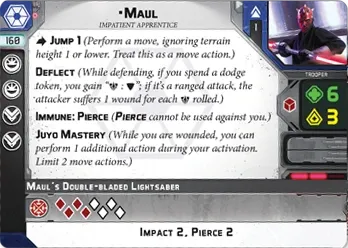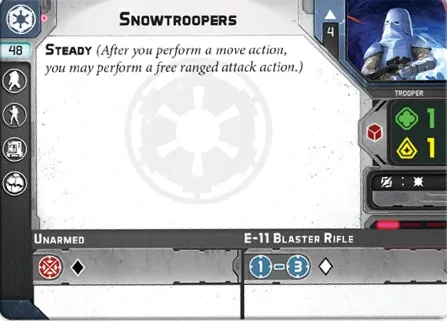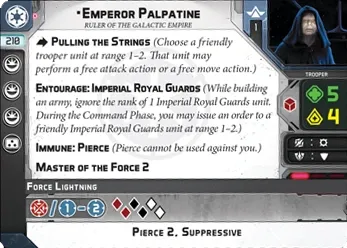The Simulations - Listbuilding

Welcome to the training room! Today we're looking to go through more of the game theory behind a lot of lists and what makes every list good.
The nice thing is that Legion is very good at making units and cards viable and shaking up the meta after a points change, and then again as the meta shifts to deal with new units or a "solved meta". Everything you're looking to put into a list can be used to its fullest, even if it doesn't always feel worth the invested points. Bad units can be good in the right hands, and good units become great. Knowing where to look for turn zero is a good place to start though, and the quickest way to solidify your victory!
I'm going to dive into three major parts of list building to think about, and I'll include examples that really show each one.
Part I - Your Goal

Every game you need to know what you're doing.
Sometimes you do this by taking a twenty point bid and making sure you're blue player. Other times it means you take a bunch of good units with a good commander and hope to dodge your bad matchups. Always your list should have a goal.
A few major categories of this include:
- Melee Skew (double Jedi, wookiees, dewbacks, tauntauns, etc.)
- Gunline (Iden ISF, Krennic DTs, Rex/Clone Commander, Droids/DSD, etc.)
- Jack of All Trades (Cassian SF, Maul gunline, etc.)
- Centerpiece (tank/double tank, single Jedi with support, etc.)
- Gimmick (Yoda/Padme/Saber, Han and AT-RT Flamers, etc.)
These aren't comprehensive, and there are some overlaps here, but in general these are the categories you'll see lists build within.
You'll notice that with each of those you can see a game plan that would be in place. With a Melee Skew you'll see a very aggressive play style meant to disrupt the opponent. With a Jack of All Trades you'll see a list that does ok with most deployments, objectives, and conditions, but can be easily disrupted if the opponent knows how to handle each unit. This leads to the necessity of...
Part II - The Objective Deck
Most gunlines HATE Breakthrough. Disarray is a struggle for order control. Limited Visibility hampers snipers for multiple turns. This is why the objective deck is so important! You can win the game in setup if you build your objective deck right, though the recent changes help decrease that.
It is crucial that you know what your lists like. I'm going to provide a brief breakdown of each objective deck choice and what list may like that:
Objectives:
- Recover the Supplies - Any list with infiltrate or speed 3 trooper units
- Key Positions - Tanks, Gunlines, and Melee, oh my! The distinction of Unit Leader rather than a specific type of unit means that all units in the game can score on this, which is necessary for vehicles especially
- Intercept the Transmissions - Tanks and Melee love this as they can control the center of the board well
- Breakthrough - Speedy units (not just troopers!) P.S. this is a massive disruption to gunlines
- Hostage Exchange - red save corps units; commanders who grant extra moves (Yoda, Leia, Padme, Palpatine)
- Bombing Run - Speed 3! (notice a trend?)
- Payload - Melee units, units with Steady
- Sabotage the Moisture Vaporators - Gunlines, high damage lists
Deployments:
- Major Offensive - Almost any list takes this, very balanced
- The Long March - Gunlines, tanks, speedy units
- Disarray - Infiltrate lists (commonly rebel), control lists with low order control, multi-threat
- Battle Lines - Gunlines, speedy units, multi-threat
- Advanced Positions - Almost any trooper based list, greatly benefits Captain Rex especially
- Danger Close - Melee, high defense lists
- Hemmed In - Melee, gunlines, centerpiece
- Roll Out - Vehicles, gunlines
Conditions:
- Rapid Reinforcements - High activation
- Minefield - Speedy units! (Good with breakthrough and bombing run)
- Limited Visibility - Melee, lists with no/low range 4+ weapons
- Hostile Environment - Gunlines, suppression lists
- Clear Conditions - Everyone likes this
- Fortified Positions - Tanky units, high damage units (good with Vaps)
- Supply Drop - Infiltrate units, speedy units, high activation lists
- War Weary - Gunlines, suppression lists
I'll tell you that the Objective Deck is important, but thanks to the new changes where all four cards are out there is rarely an instance where you are shoehorned into playing something directly opposed to your list.
Notably the cards that benefit speedy units (Recover the Supplies, Bombing Run, Breakthrough, Disarray, Minefield) are the ones that are typically worse for lists that don't contain those units. Most lists can make do but have preferences, but lists like Triple STAPs, Double Snowspeeders, etc. all are polarizing on what they want, and so typically they take a bigger bid, which means they can take less...
Part III - Cards
You're probably thinking "well yeah the cards I take are crucial for the list I build, no duh." and I would agree with you. The nuance to this is how to streamline your list. Trimming the fat is crucial for some builds and allows for a better list. Thankfully AMG (and formerly FFG) is good at adjusting points costs to make it so trimmed fat opens up more options and doesn't just leave you with tons of spare points and a big big. Let's look at a few unit cards and see ways to play off of their natural strengths and to learn about how to fill slots effectively.

Maul has a strong saber in melee, but because Saber Throw lets you use half of the dice and choose which ones, he has the best saber throw in the game with 4 red dice.

Snowtroopers are another example of this. They have a strong heavy weapon in the Flamethrower Trooper, but a weak ranged weapon in the E-11. Because they have a grenade option and the Flamethrower Trooper is also lmiited to range 1, they may be a good unit for Fragmentation Grenades, which would make your pool 4 red dice and black dice equal to the number of minis in the defending squad. With Steady, you've built a formidable close range squad, while also filling a slot that typically is left empty!

Finally, let's look at Palpatine. While limited in what slots he has, Palpatine opts for different cards than others with the same slots. His Master of the Force 2 means you could opt for two exhaustible cards, but his one pip "And Now You Will Die" makes a strong case for Anger to be used. His high cost also means that losing other models can be deadly, so Force Barrier could help. His weapon being both ranged and melee also adds to this, as it means he doesn't require Saber Throw, and isn't always in range for Force Choke or Force Push. Regardless, Palpatine is a strong commander who has alternative card choices, making him a good example of needing to know how to build based on your units.
Conclusion
Together, these three things work together to build your list. Your cards give your list an archetype, which needs good objectives, which certain cards are better at, and thus a cycle is created until you fill those 800 points. In a later article we'll look at some "good" and "bad" lists and discuss how to make them better, but for now, that's all. Thanks for reading, and I'd love to hear some list tips you have in the comments.
